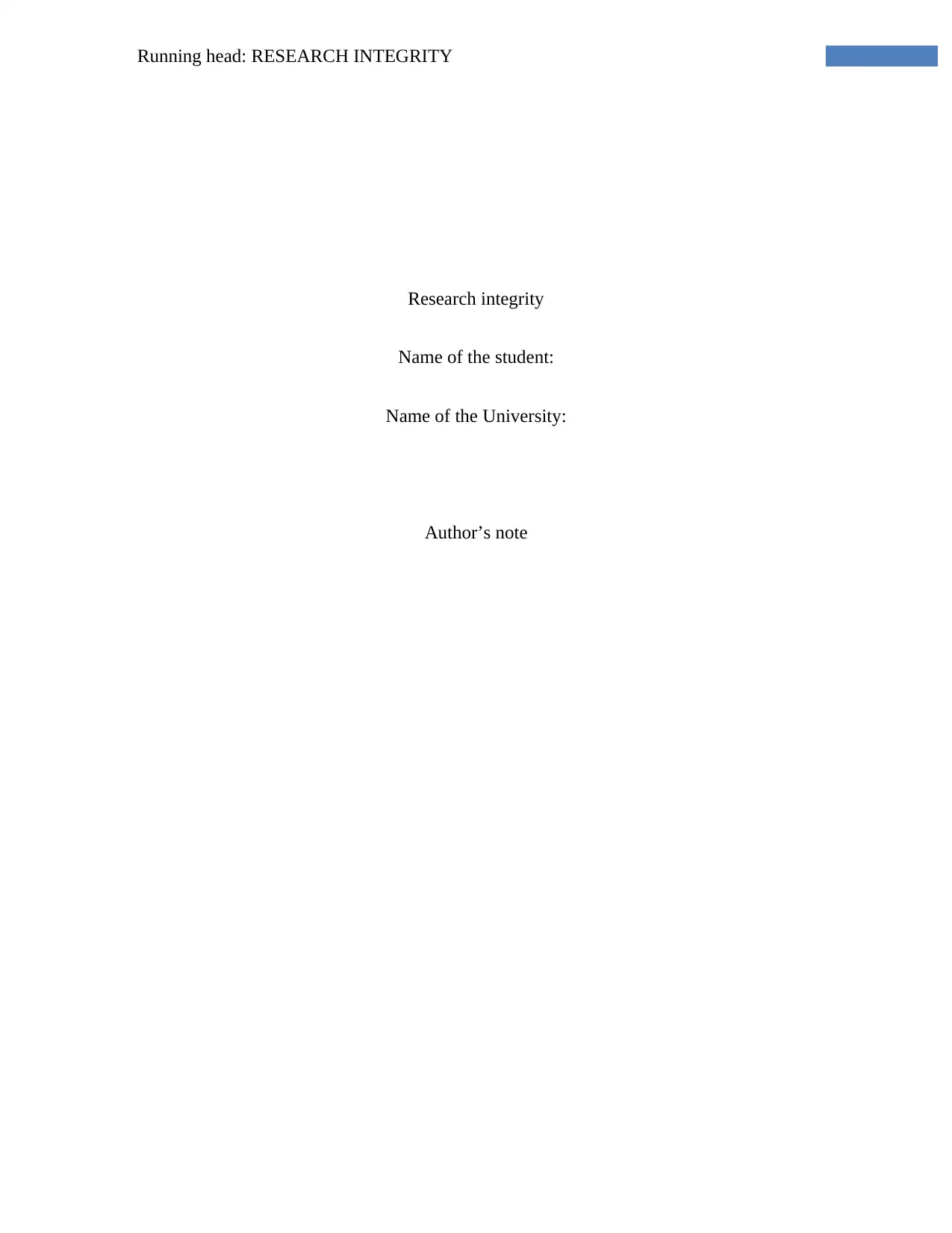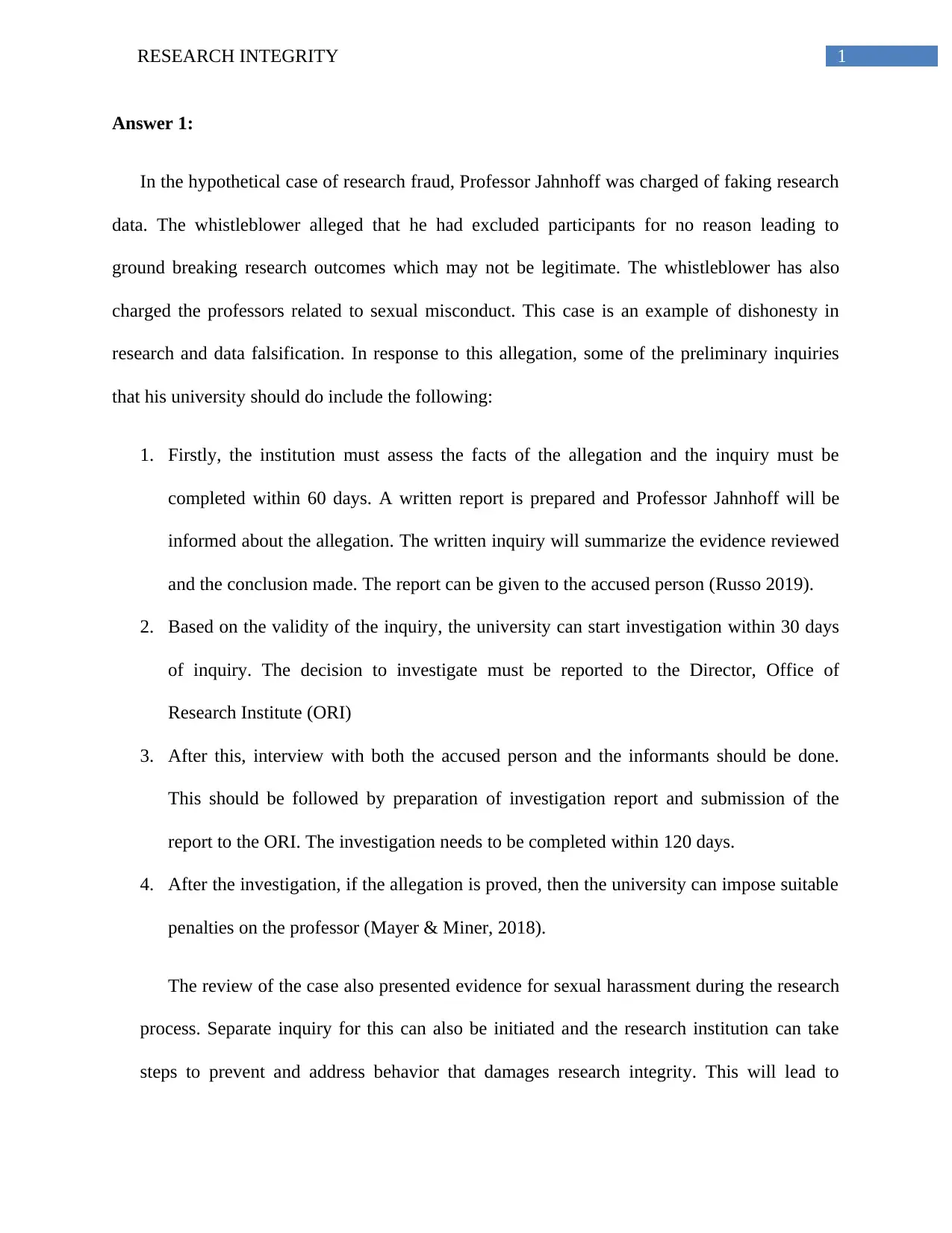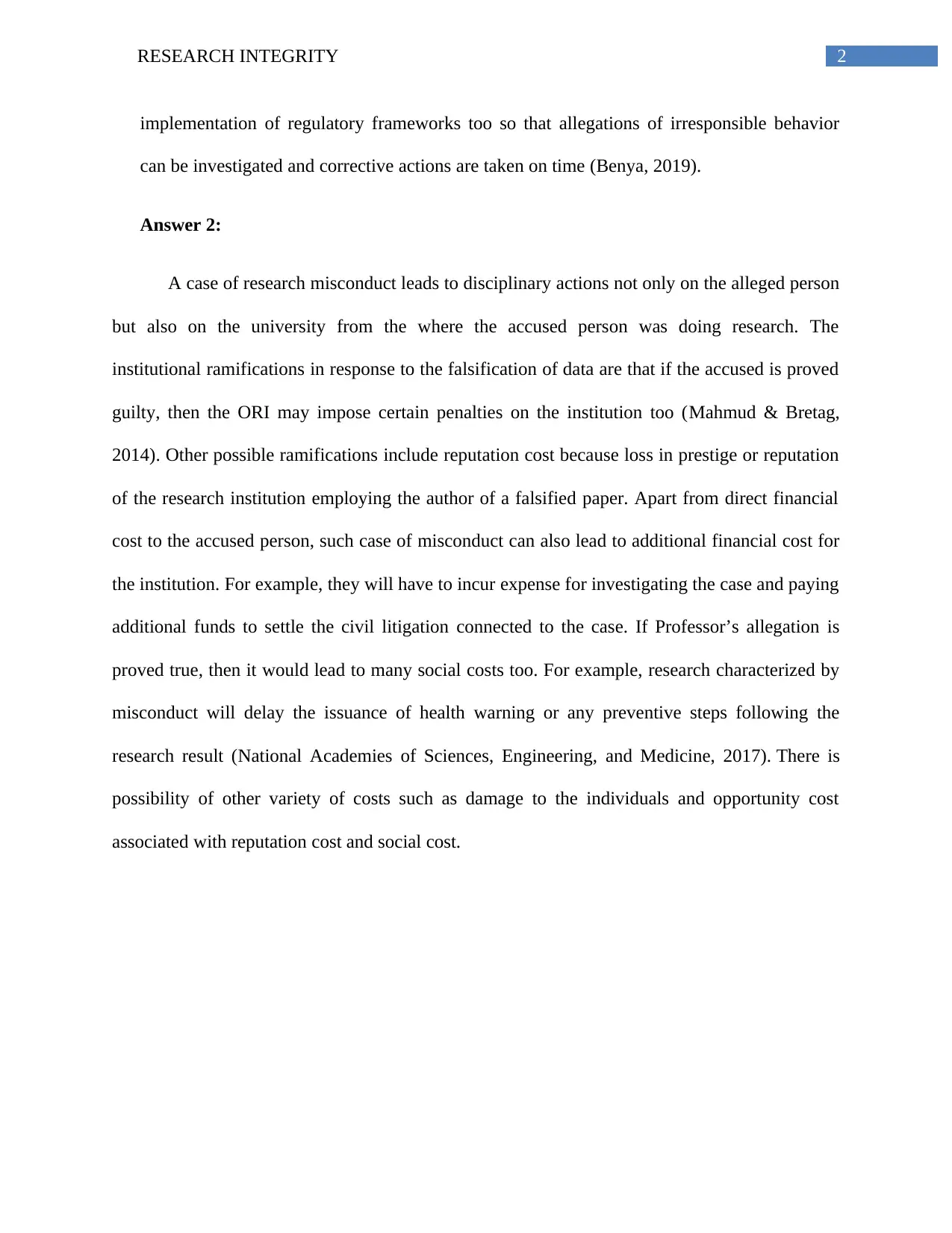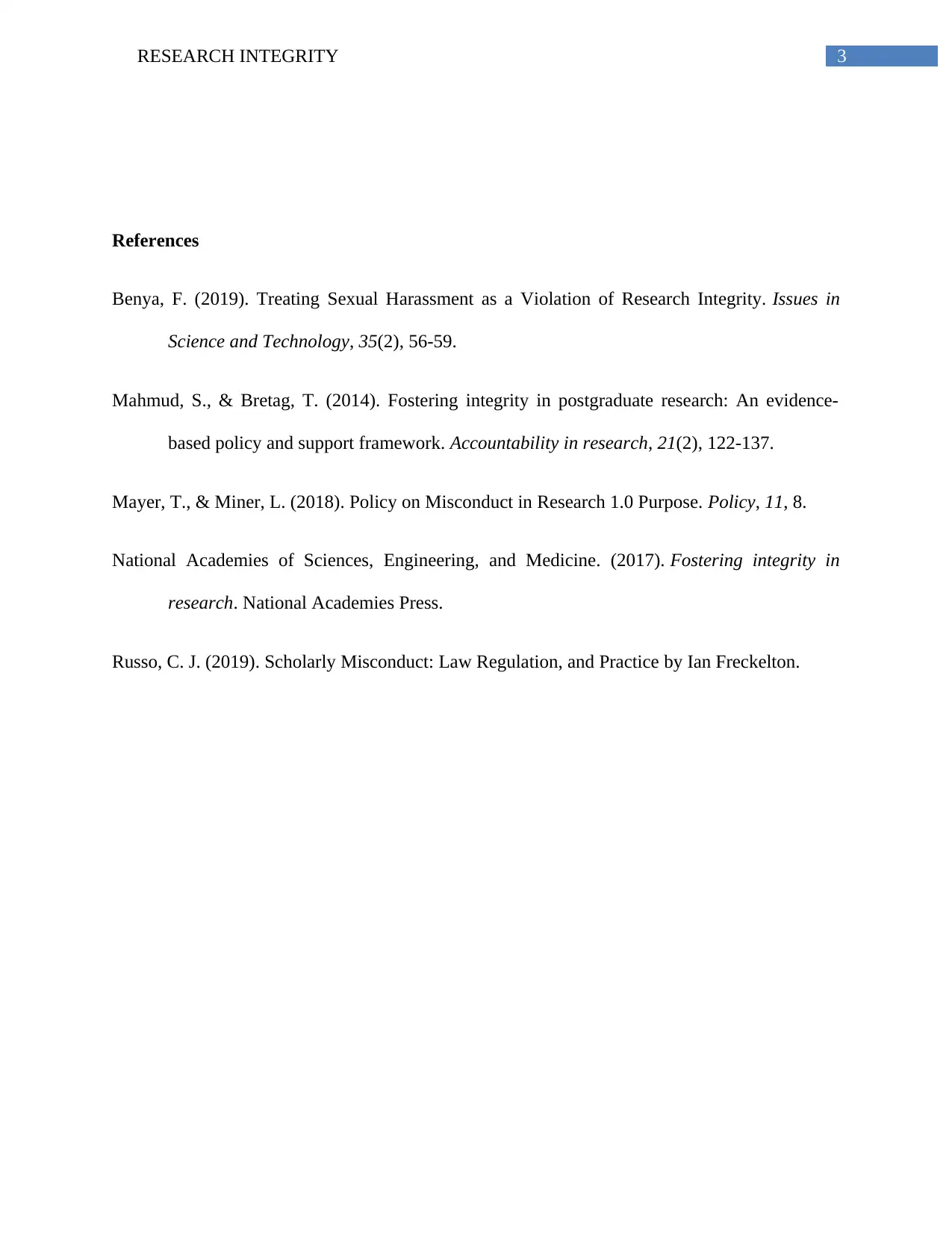Research Integrity Report: Misconduct Case at Chalkman University
VerifiedAdded on 2022/08/25
|4
|720
|21
Report
AI Summary
This report addresses a hypothetical case of research fraud at Chalkman University involving Professor Jahnhoff, a highly regarded oncology researcher. The report answers two key questions: First, it outlines the preliminary inquiries the university should undertake in response to allegations of data falsification and sexual misconduct, including assessing the facts, preparing a written report, and conducting interviews. Second, it discusses the institutional and other ramifications of the alleged misconduct, such as potential penalties from the ORI, reputational damage, financial costs, and social costs like delays in health warnings. The report references relevant literature to support its analysis, adhering to APA guidelines, including running headers and page numbers. The case highlights the importance of research integrity and the consequences of misconduct in academia.
1 out of 4











![[object Object]](/_next/static/media/star-bottom.7253800d.svg)